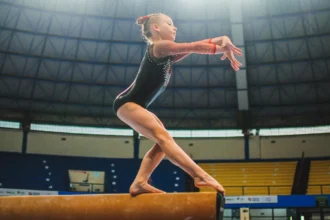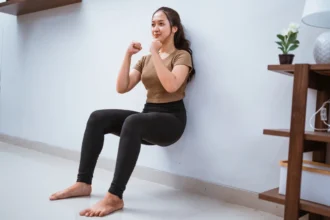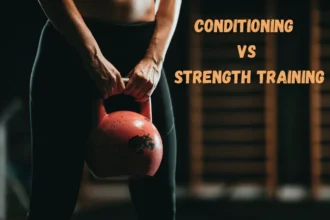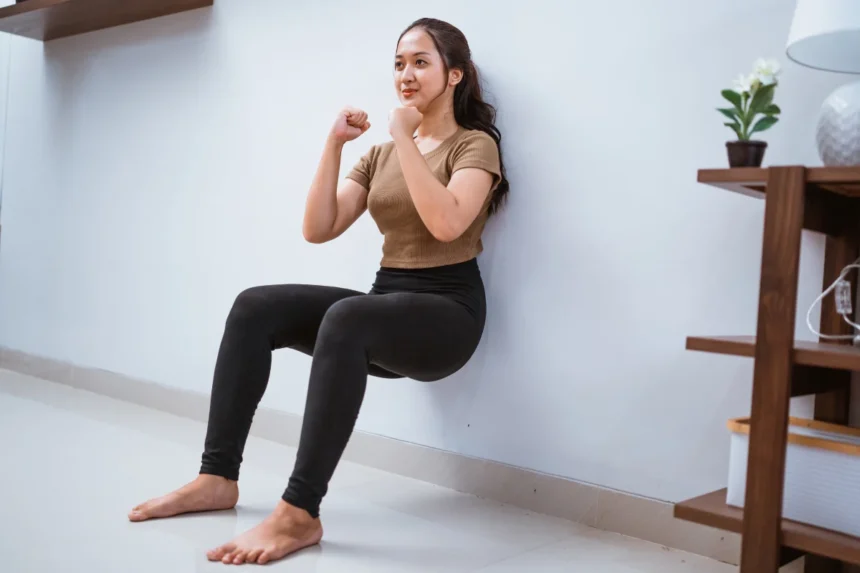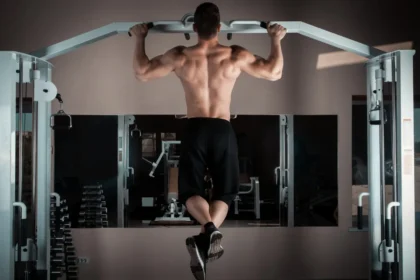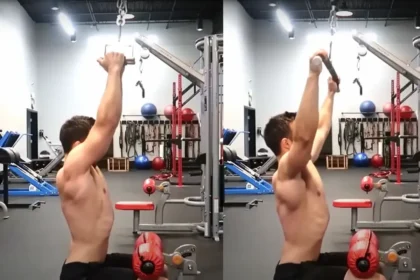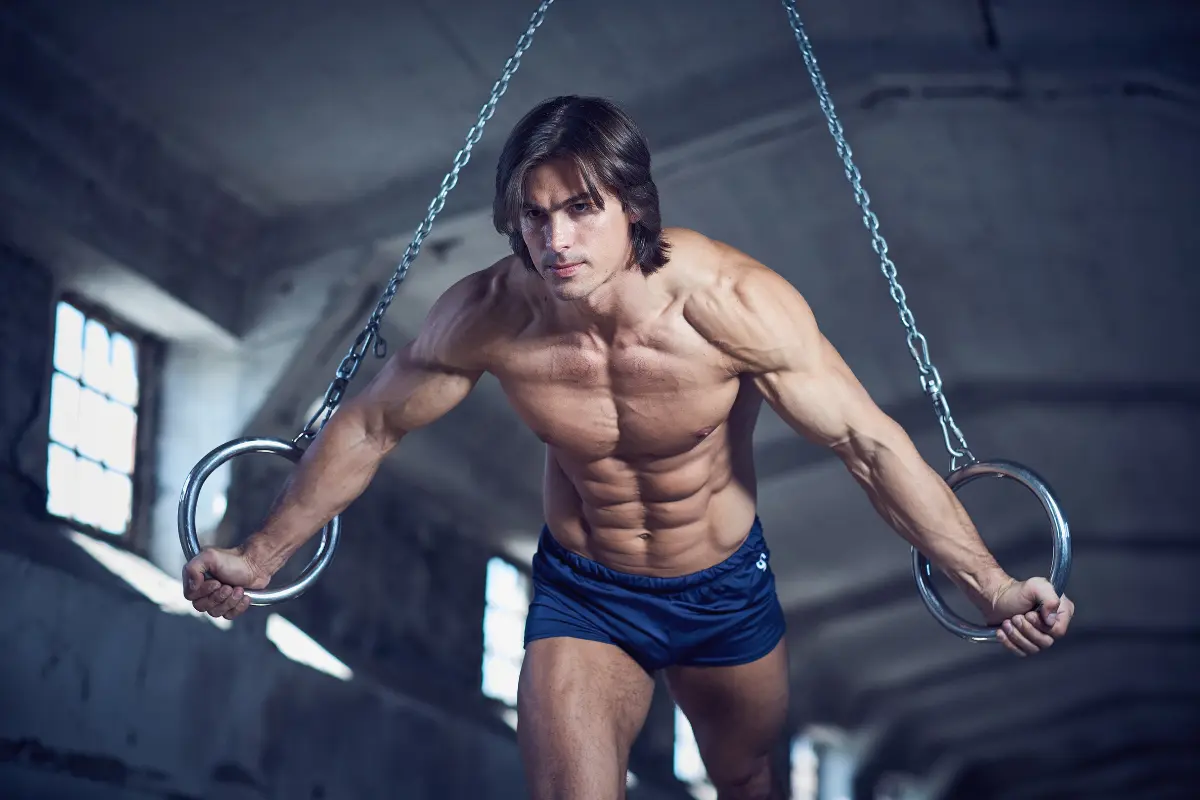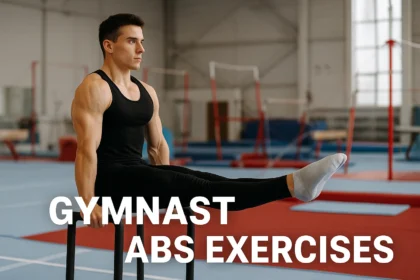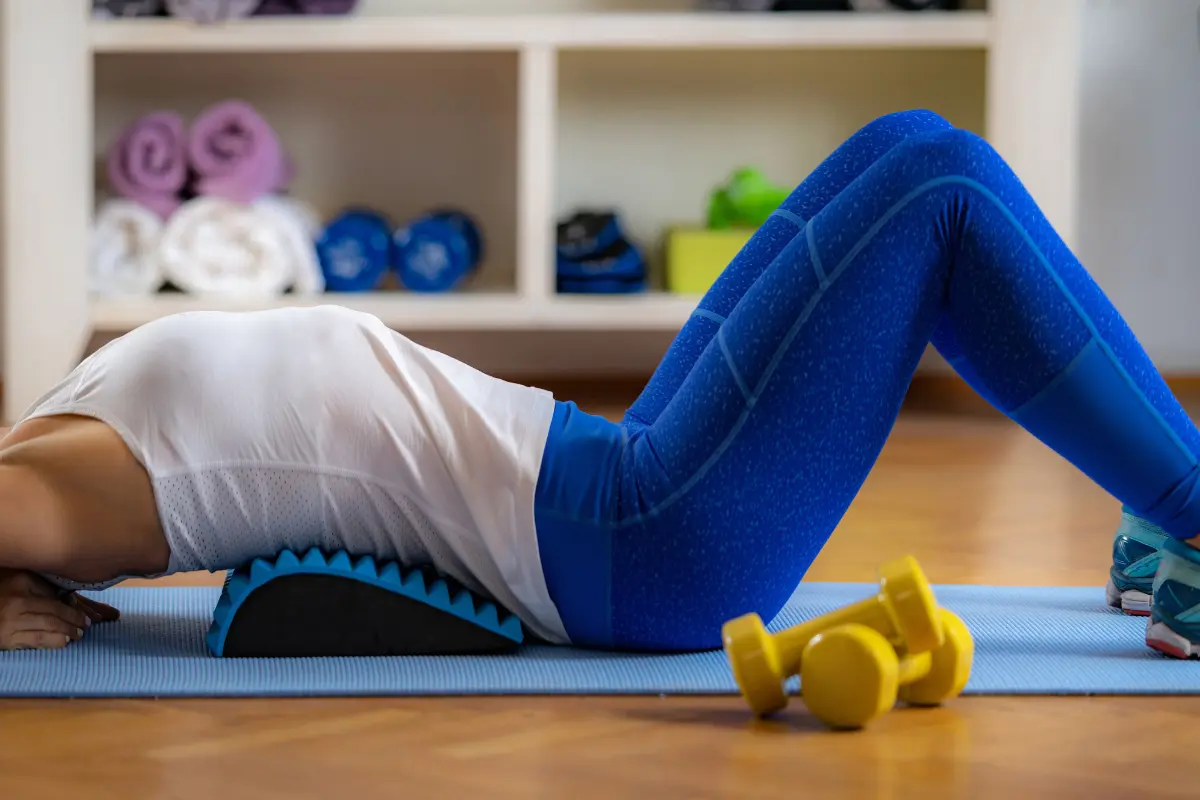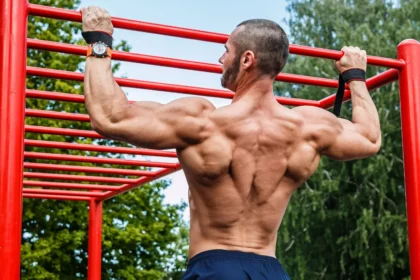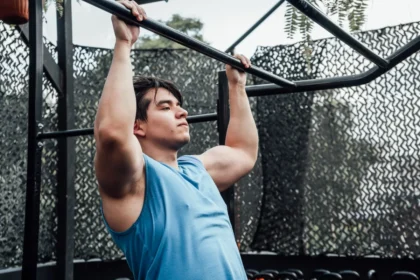Most gymnasts and coaches focus on the four main events, but smart training programs recognize a fifth: conditioning. According to USA Gymnastics’ U103 Fitness Curriculum, conditioning is more than just a warm-up or extra work—it’s a foundational discipline that supports every skill, every season.
Consistent strength and mobility work doesn’t just keep muscles active—it protects growing joints, strengthens connective tissue, and keeps the nervous system primed for explosive movements. When conditioning drops off, the effects show quickly:
- Core tightness fades—your hollow body shape on giants and handstands starts to weaken
- Landings feel heavier, and timing gets off
- Injuries become more likely due to reduced control and durability
Even a short lapse can cause performance to slip. But a steady home routine—even just 15–20 minutes a few days a week—helps gymnasts stay strong, springy, and prepared to return to the gym with confidence, not stiffness.
Gymnastics Conditioning Workout: Full-Body Burn with No Equipment
This gymnastics conditioning workout packs a punch with six intense, technique-driven exercises you can do at home—no equipment needed. It’s quick, focused, and perfect for gymnasts who want to stay strong and sharp between training sessions.
How the Circuit Works
- Work: Rest ratio: 50 seconds on, 10 seconds off
- Total time: 6 minutes (one round)
- Goal: Quality of shape and tension beats speed. Treat each rep like part of a routine.
- Progression: Complete up to three rounds. Rest 30–60 seconds between rounds, or until you can breathe steadily through your nose.
Warm up with two minutes of shoulder circles, cat–cows, hip openers, and ankle rocks so you can jump straight into crisp positions when the timer starts.
1. Single-Leg Leg Lifts
Focus: Core strength, lower abdominal control
Start in a hollow hold position with your lower back pressing firmly into the floor. The goal is to avoid any arching. Lift one leg at a time while keeping your upper body slightly elevated, like a controlled V-up on one side. Time the movement so your leg and chest rise together in sync. This engages both your abs and hip flexors in a gymnastics-specific way.
✅ Coach Tip: “Keep your back glued to the floor the whole time to protect your spine and activate your deep core.”
2. Handstand Shoulder Lockout
Focus: Shoulder strength, alignment, and stability
This move challenges your ability to push away from the floor—a key concept in all handstand and overhead skills. You can do this either in a full handstand against the wall or regress it to a plank position. In both versions, the cue is the same: press through the shoulders to “lock out” the position and close the space between your shoulders and ears.
✅ Coach Tip: “Think about shrugging your shoulders up to your ears while keeping your body long and tight.”
3. Dish to Superman Hold
Focus: Posterior chain and hollow body control
Flip from a dish (hollow) position to a superman (arch) hold without letting your arms or legs touch the floor. This transition mimics the body tension changes used in skills like round-offs, back handsprings, and bar transitions. Keep your limbs long and resist the urge to relax between switches.
✅ Coach Tip: “The in-between movement matters most—control it!”
4. Straddle Leg Lifts (Against the Wall) (50 sec)
Focus: Hip flexor strength, straddle mobility, and core control
Sit in a straddle against a wall so your back doesn’t rock backward. Place one hand on either side of your leg and try to lift it off the floor, one leg at a time. You’ll feel this in your hip flexors and abs almost immediately.
✅ Coach Tip: “No rocking! Let the wall help isolate the lift. Keep your posture tall.”
5. Handstand Wall Walk
Focus: Upper body control, core strength, body awareness
This one is tough! Start in a plank with your feet against the wall and slowly “walk” your feet and hands up the wall toward a vertical handstand. If that’s too much, modify by only walking partway up until you reach a diagonal body line. This builds strength for full handstand work and challenges your coordination.
✅ Coach Tip: “Take your time and stay hollow. Don’t let your back arch or your core sag.”
6. Stationary Leg Kicks + Tuck & Straight Leg Hold
Focus: Hip strength, control, and core activation
Start with 10 quick leg kicks on each leg, lifting your straight leg up and back down without momentum. After that, you’ll hold a 10-second tuck (knees to chest) and a 10-second straight leg hold. This challenges your midline and trains control for leaps and acro skills.
✅ Coach Tip: “Kick with control, not momentum. Focus on quality, not height.”
That’s it—a full-body gymnastics conditioning session in just 6 minutes! It’s fast, focused, and perfect for gymnasts, dancers, or anyone who wants to train like one. The combination of holds, dynamic movements, and bodyweight strength exercises makes this ideal for building functional control and endurance.
💡 Want to level up the challenge? Add a second or third round with 30–60 seconds rest in between.
Programming Tips & Variations
| Goal | Prescription | Variation Ideas |
|---|---|---|
| Maintenance between gym sessions | 1 round, 3 days a week | Keep the work: rest at 50: 10 |
| Strength & power boost | 2–3 rounds, 4 days a week | On round 2, add a 3-second eccentric to each rep; on round 3, add a pause at peak position |
| End-of-practice finisher | 1 “as-clean-as-possible” round | Reduce work interval to 40 seconds to prioritise form when fatigued |
Six minutes may sound like a flash, but when every rep is locked in with gymnast precision, your core, shoulders, and hip flexors will know they’ve worked. Sprinkle this circuit into rest days, travel days, or post-practice conditioning blocks, and you’ll keep your lines tight, your shapes sharp, and your body competition-ready—no gym required.


